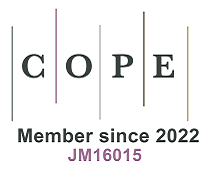Volume 5, Issue 1 (2025) – 20 articles
Cover Picture: Conductive polymer composites used to develop stretchable strain sensors have great potential for a wide range of applications, but engineering such a sensor with high sensitivity and durability remains very challenging. In this study, we propose a hydrothermal approach coupled with a freeze-drying technique to fabricate durable and stretchable strain sensors based on polydopamine-functionalized halloysite nanotube/reduced graphene oxide/polydimethylsiloxane (PDA@HNT/rGO/PDMS) aerogel composites. These sensors exhibit exceptional sensing performance, enhanced stretchability, linearity range, and stability. A comparative analysis of graphene oxide at different concentrations demonstrates that the flexible PDA@HNT/rGO/PDMS composites exhibit a significantly broader sensing range when the graphene oxide concentration is reduced to 2.5 mg/mL, in contrast to the higher concentration of 5.0 mg/mL. Specifically, the synergistic effect of both PDA and natural fiber HNTs results in aerogel composite strain sensors with a desirable gauge factor and a linearity sensing range as evidenced by the theoretical analysis, which demonstrates great potential for wearable electronics and human motion detection. The synergy between PDA and HNTs enhances the properties of aerogel composite strain sensors by improving interfacial adhesion, uniformly dispersing reinforcing agents, and maintaining conductive pathways, resulting in a highly sensitive, broad-range, and durable device. The development of conductive PDA@HNT/rGO/PDMS aerogel composites for flexible strain sensors represents an important advancement in the field of wearable technology and has the potential to revolutionize the way we monitor and respond to mechanical stress in various applications.
view this paper Back Cover Picture: Scanning electron microscopy (SEM) has been widely utilized in the field of materials science due to its significant advantages, such as large depth of field, wide field of view, and excellent stereoscopic imaging. However, at high magnification, the limited imaging range in SEM cannot cover all the possible inhomogeneous microstructures. In this research, we propose a novel approach for generating high-resolution SEM images across multiple scales, enabling a single image to capture physical dimensions at the centimeter level while preserving submicron-level details. We adopted the SEM imaging on the AlCoCrFeNi2.1 eutectic high entropy alloy as an example. SEM videos and image stitching are combined to fulfill this goal, and the video-extracted low-definition images are clarified by a well-trained denoising model. Furthermore, we segment the macroscopic image of the eutectic high entropy alloy, and the area of various microstructures is distinguished. By combining the segmentation results and hardness experiments, we found that the hardness is positively correlated with the content of the body-centered cubic phase and negatively correlated with the lamella width. The whole procedure is also applied to a thermoelectric gradient material (PbSe-SrSe). Our work provides a feasible solution to generate macroscopic images based on SEM for further analysis of the correlations between the microstructures and spatial distribution, and can be widely applied to other types of microscopes.
view this paper











